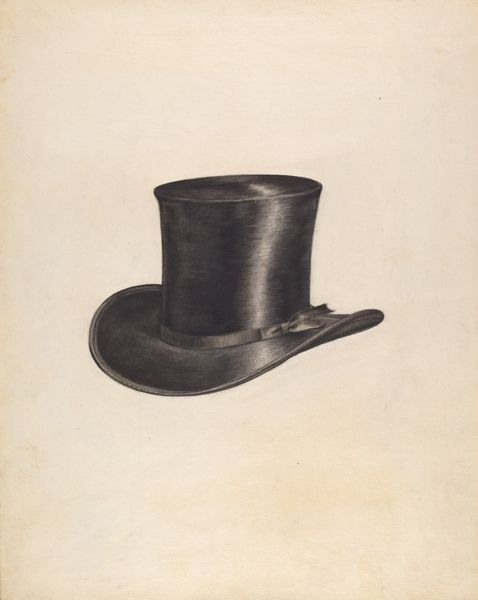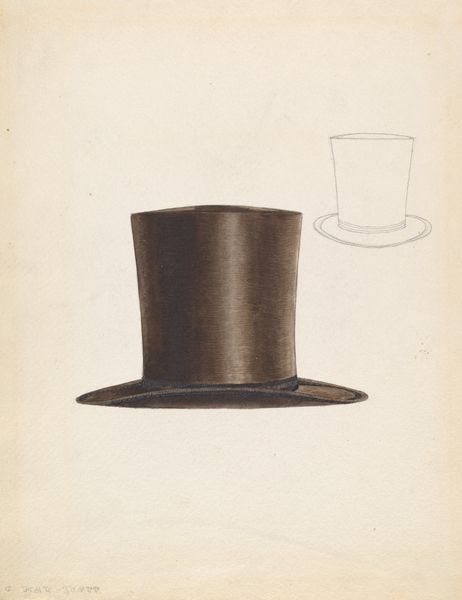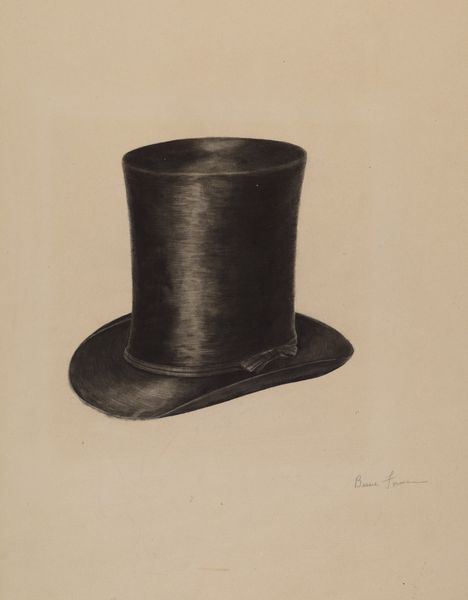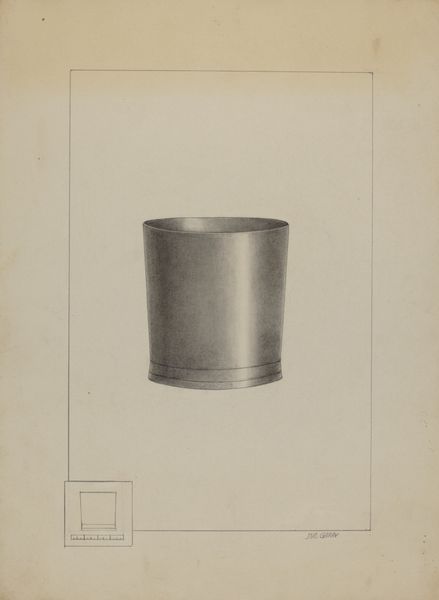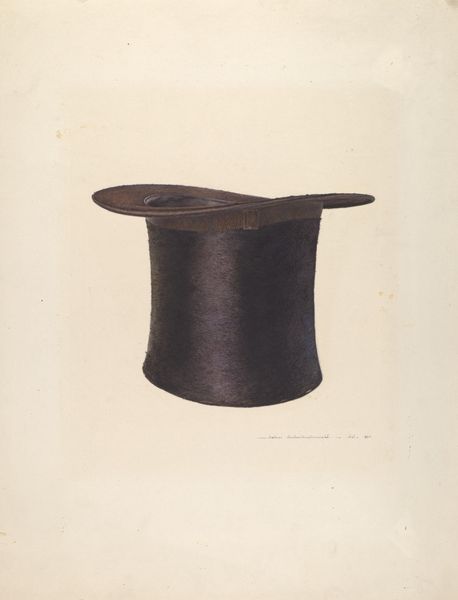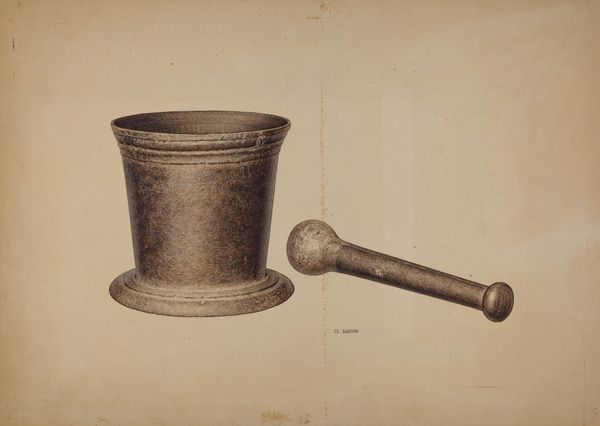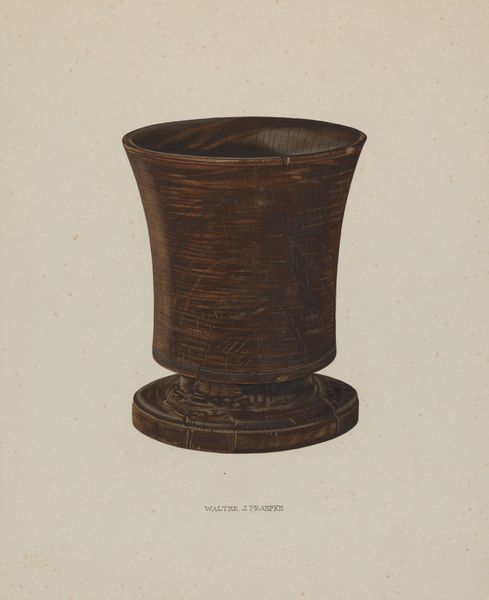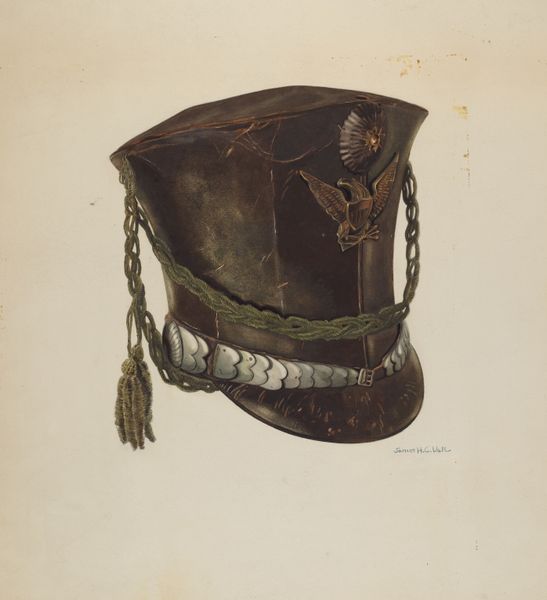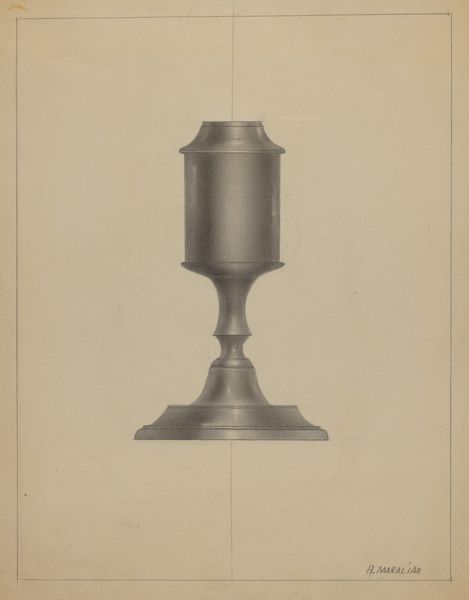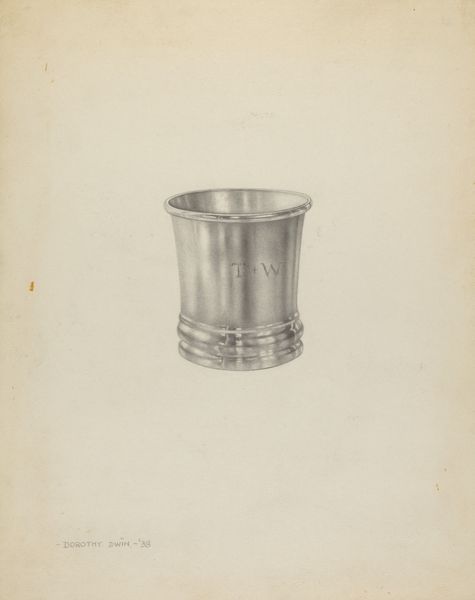
drawing, pencil, graphite
#
pencil drawn
#
drawing
#
charcoal drawing
#
pencil drawing
#
pencil
#
graphite
#
portrait drawing
Dimensions: overall: 36 x 36 cm (14 3/16 x 14 3/16 in.)
Copyright: National Gallery of Art: CC0 1.0
Editor: So, here we have Henry De Wolfe's "Man's Hat," a pencil and graphite drawing made sometime between 1935 and 1942. There's a strange formality about this, the subject, isolated against this plain background. What strikes you about it? Curator: I’m drawn to the drawing itself – the process. Think about the graphite: where did it come from? The mines, the labor involved in extracting it, turning it into something usable. Editor: Right, and then transforming it into a tool, the pencil, that produces...this. A singular object depicted on paper. Curator: Exactly. Consider the hat as an object itself: mass-produced, consumed, and eventually, rendered in this hand-drawn style. What does that shift from mass production to unique depiction tell us? The labor of the drawing, mimicking mass production versus its actuality. Editor: It’s like a record of labor – both the unseen work behind the materials and the artist's hand re-presenting them. Were such hats common then, implying social status? Curator: Precisely! The top hat carried very specific connotations. Reflect upon the relationship of access. Who owned such a thing, what statement was its utility making. Consider the consumption and discarding practices during its manufacture period, for greater insight. Editor: So it’s not just about the object depicted, but everything around its creation and its social context? Curator: Absolutely. Analyzing the materiality offers us pathways into a far richer historical and social reading. Editor: That's fascinating. I’m seeing the hat in a completely new way, not just as an object, but as a product of many processes.
Comments
No comments
Be the first to comment and join the conversation on the ultimate creative platform.
